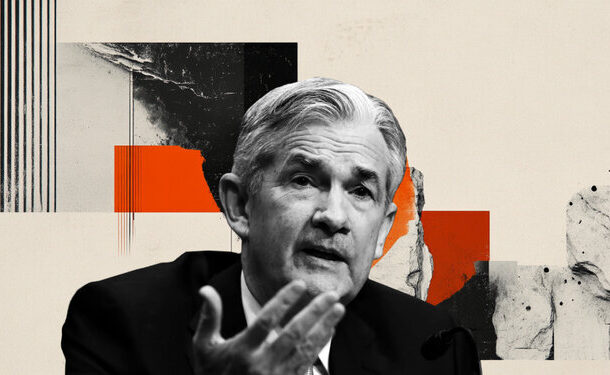
Recent Posts
The US Dollar retreated against its Canadian Counterpart on Monday as Trump’s announcement of a ceasefire in the Middle East boosted risk appetite. The pair’s reversal, however, has been capped above 1.3700 with investors awaiting Canadian inflation figures.
The US Dollar is trading lower across the board, with the US Dollar Index (DXY) more than 1% below Monday’s highs. The agreement between Israel and Iran to cease all hostilities has boosted market sentiment and sent safe-haven assets like the US Dollar tumbling.
The Canadian Dollar, however, is failing to put a significant distance from Monday’s lows, weighed by a nearly 15% decline in Oil prices in the last two days. Oil is Canada’s main import, and the CAD is strongly correlated to Crude prices.
Investors’ hopes of a long-lasting truce in the Middle East have eased concerns about a disruption to Oil supply that had boosted prices in the last few weeks. The risks of Iran blocking the Strait of Horm¡uz have also declined, altogether prompting a more than $10 sell-off in WTI prices over the last two days. This is acting as a headwind for the CAD.
Beyond that, traders are also wary of placing large CAD longs ahead of the Canadian CPI release, due later today. Consumer inflation is expected to have picked up in June, which might complicate the Bank of Canada’s monetary policy and increase pressure on the loonie.
In the US, all eyes will be on Fed chairman Powell, whose testimony to Congress will be observed with interest, as the dovish comments by Waller and Bowman in recent days have heightened hopes of a rate cut in the coming months.
WTI Oil is a type of Crude Oil sold on international markets. The WTI stands for West Texas Intermediate, one of three major types including Brent and Dubai Crude. WTI is also referred to as “light” and “sweet” because of its relatively low gravity and sulfur content respectively. It is considered a high quality Oil that is easily refined. It is sourced in the United States and distributed via the Cushing hub, which is considered “The Pipeline Crossroads of the World”. It is a benchmark for the Oil market and WTI price is frequently quoted in the media.
Like all assets, supply and demand are the key drivers of WTI Oil price. As such, global growth can be a driver of increased demand and vice versa for weak global growth. Political instability, wars, and sanctions can disrupt supply and impact prices. The decisions of OPEC, a group of major Oil-producing countries, is another key driver of price. The value of the US Dollar influences the price of WTI Crude Oil, since Oil is predominantly traded in US Dollars, thus a weaker US Dollar can make Oil more affordable and vice versa.
The weekly Oil inventory reports published by the American Petroleum Institute (API) and the Energy Information Agency (EIA) impact the price of WTI Oil. Changes in inventories reflect fluctuating supply and demand. If the data shows a drop in inventories it can indicate increased demand, pushing up Oil price. Higher inventories can reflect increased supply, pushing down prices. API’s report is published every Tuesday and EIA’s the day after. Their results are usually similar, falling within 1% of each other 75% of the time. The EIA data is considered more reliable, since it is a government agency.
OPEC (Organization of the Petroleum Exporting Countries) is a group of 12 Oil-producing nations who collectively decide production quotas for member countries at twice-yearly meetings. Their decisions often impact WTI Oil prices. When OPEC decides to lower quotas, it can tighten supply, pushing up Oil prices. When OPEC increases production, it has the opposite effect. OPEC+ refers to an expanded group that includes ten extra non-OPEC members, the most notable of which is Russia.
Information on these pages contains forward-looking statements that involve risks and uncertainties. Markets and instruments profiled on this page are for informational purposes only and should not in any way come across as a recommendation to buy or sell in these assets. You should do your own thorough research before making any investment decisions. FXStreet does not in any way guarantee that this information is free from mistakes, errors, or material misstatements. It also does not guarantee that this information is of a timely nature. Investing in Open Markets involves a great deal of risk, including the loss of all or a portion of your investment, as well as emotional distress. All risks, losses and costs associated with investing, including total loss of principal, are your responsibility. The views and opinions expressed in this article are those of the authors and do not necessarily reflect the official policy or position of FXStreet nor its advertisers. The author will not be held responsible for information that is found at the end of links posted on this page.
If not otherwise explicitly mentioned in the body of the article, at the time of writing, the author has no position in any stock mentioned in this article and no business relationship with any company mentioned. The author has not received compensation for writing this article, other than from FXStreet.
FXStreet and the author do not provide personalized recommendations. The author makes no representations as to the accuracy, completeness, or suitability of this information. FXStreet and the author will not be liable for any errors, omissions or any losses, injuries or damages arising from this information and its display or use. Errors and omissions excepted.
The author and FXStreet are not registered investment advisors and nothing in this article is intended to be investment advice.

GBP/USD holds the latest uptick to near 1.3600 in the European session on Tuesday, bolstered by a broadly weaker US Dollar, following the Iran-Israel ceasefire. Traders eagerly await BoE Governor Bailey’s and Fed Chair Powell’s testimonies for fresh policy cues and trading impetus.

This Tuesday, Statistics Canada will release the Consumer Price Index (CPI) for May. This will get the market’s attention because it will provide new information about inflation trends that the Bank of Canada uses to make decisions about interest rates. The headline CPI is seen rising 1.7% from a year earlier.

As the Israel-Iran conflict reaches new heights, an old threat is coming back to haunt the markets: that of the closure of the Strait of Hormuz. This narrow arm of the sea in the Persian Gulf, wedged between Iran to the north and the United Arab Emirates and Oman to the south, is much more than a simple sea passage.

SPONSORED Discover the top brokers for trading EUR/USD in 2025. Our list features brokers with competitive spreads, fast execution, and powerful platforms. Whether you’re a beginner or an expert, find the right partner to navigate the dynamic Forex market.
